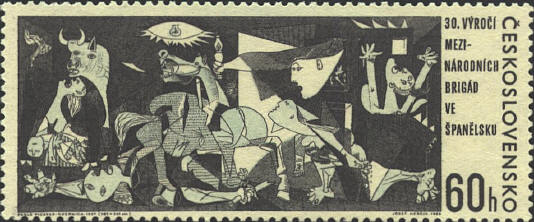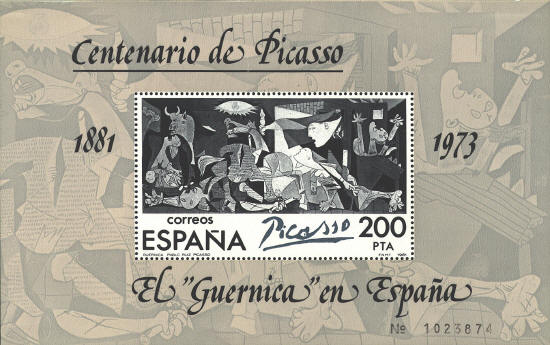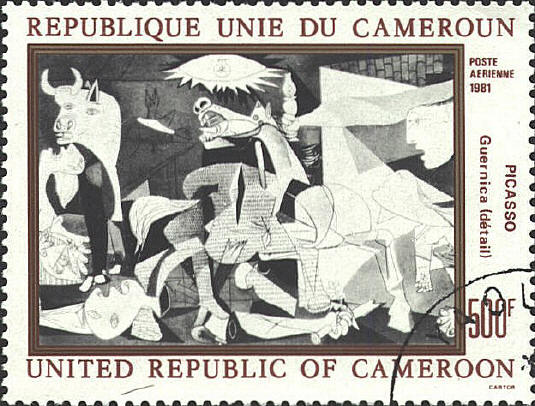|
Guernica was a Basque
village in northern Spain. In 1937 it was destroyed by German and
Italian bombs. Pablo Picasso painted Guernica to show the horror of
such "saturation bombing." In "Existential Aspect of Modern Art," in
On Art and Architecture, Paul Tillich wrote, "During one of my
lectures I once was asked, 'What would you think is the best
present-day Protestant religious picture?' I answered almost without
hesitating, 'Guernica.' I named this picture, because it shows the
human situation without any cover. It shows what very soon followed in
most European countries in terms of the second World War, and it shows
what is now in the souls of many Americans as disruptiveness,
existential doubt, emptiness and meaninglessness. And if
Protestantism means that, first of all, we do not have to cover up
anything, but have to look at the human situation in its depths of
estrangement and despair, then this is one of the most powerful
religious pictures. And, although it has no religious content, it does
have religious style in a very deep and profound sense."
A tapestry reproduction of Guernica, given by
the estate of Nelson A. Rockefeller in 1985, hangs outside the
Security Council chamber at the United Nations headquarters in New
York. In 2003 when Colin Powell, the Secretary of State of the United
States spoke to the Security Council about war against Iraq the
tapestry was concealed by a blue curtain and the flags of the
Council's member states.
Several countries have used Picasso's painting as the
central design element of stamps or souvenir sheets.




 |
